Kirsten Bradley says joining your local food co-op is one way to learn how to eat locally. In this extract from her book, The Milkwood Permaculture Living Handbook, she encourages us all to take the locavore challenge.
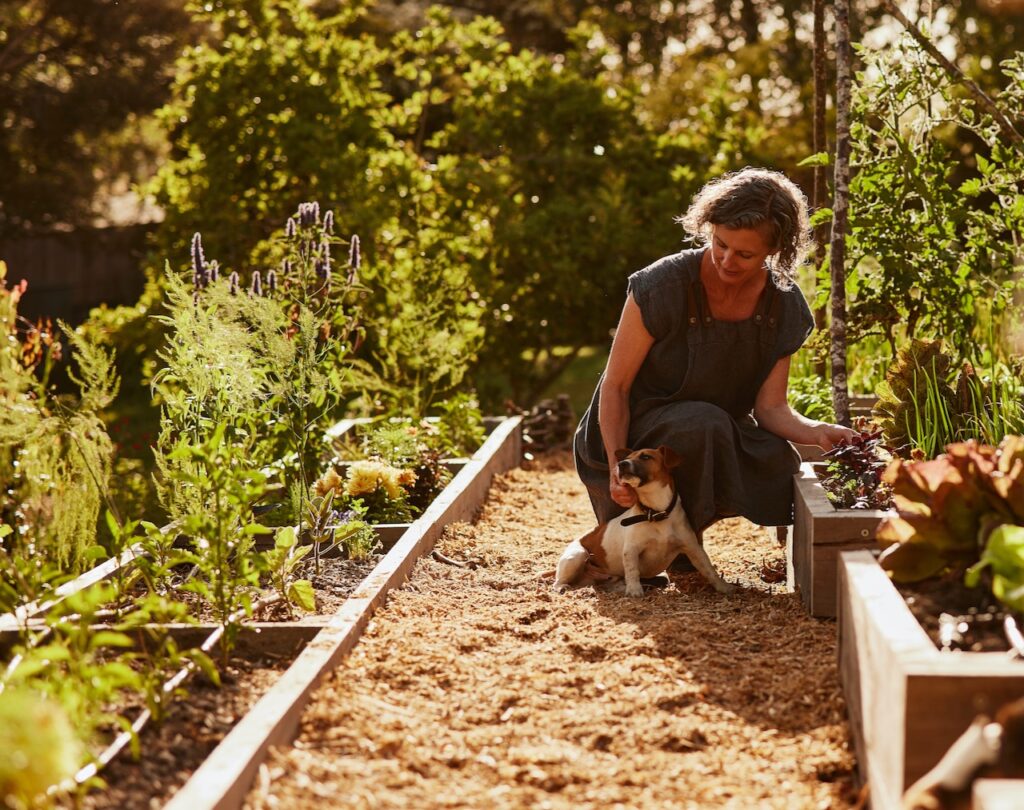
Locavore Challenge
It’s strange to think that in most places, if you go back just a couple of generations, everyone was a locavore to some degree. Sure, some foods and ingredients still came in from far away, but the majority of what folks ate was grown locally by necessity.
Most of us now shop and eat within an industrial food system operating at a global scale, even though it may not say that on the packet. Basic food items are often grown in one country, shipped to another country to be processed and packaged, and then shipped via a third to a fourth country, where you pick them up off the shelf at your store. Thinking like a locavore challenges this system in a quietly radical way.
Can we eat well from what is around us? Can we minimise our impact by choosing local alternatives to common foods, forging new connections where necessary to ensure local supply, or even occasionally going without something (gasp!) because we can’t find a local, ethically produced version?
So here’s a challenge: can you apply self-regulation and accept feedback on your current diet, and source your food as locally as possible for three whole days?
The point of this challenge is to look – really look – at what you eat and have a good think about how the impact of the foods you choose affects your ecosystem, and what it does or doesn’t do for your local economy. You are taking back your ‘foodshed’ – your local food region – and allowing the possibility for a local food economy to thrive. This kind of thinking is fundamental to permaculture, and also to having a habitable planet for everyone.
Food deserts
Many folks live in what are called ‘food deserts’: places where very little food is grown (such as cities) or where there is very little affordable local (or indeed nutritious) food. Chain stores and packaged foods from far away may be all that people in these communities have access to for their food shopping.
Exploring your local foodshed
Is it possible to eat local where you live? Let’s find out! The purpose of this three-day challenge is to explore whether you can, in fact, eat from only your local foodshed.
By beginning to understand your local food system (or lack thereof), you will be in a position to advocate for local food sources, find and support local producers, and figure out how to source more good-quality food locally, which can help erode the injustice of these food deserts for everyone in your community. Supporting local food systems creates more resilience for everyone.
So, by the end of the three days, regardless of whether or not you were able to be 100 per cent locavore, you’ll have a much better sense of your local food system and economy. You’ll be in a better position to apply self-regulation and accept feedback about your current diet, and you’ll have found new ways to source your food as regeneratively and locally as possible. Eating and shopping locally can lead to increased community resilience, an improved local economy, sustainable livelihoods for local growers – and fresher food for you and those around you.
How local? Choose your radius
The first step for this challenge is choosing your radius: the distance from home that you’re aiming to source your food from. The area within this boundary makes up your local foodshed. You might choose 200 kilometres (125 miles) as your radius, or 1000 miles (1600 kilometres). Or the boundaries of your country: this will depend on where you live. If you’re in the city or not near an agricultural area, you may need to make your radius wider and expand your foodshed to ensure you have enough to eat. If you live in a farming area, maybe you can tighten this radius to be more challenging.
This is all part of the ‘accepting feedback’ part of this permaculture principle and thus all part of this experiment. Figure out what you’ve got to work with and set yourself some reasonable boundaries.
Research and use your nearest food co-op or store that stocks local produce; you will learn about what grows near you and what doesn’t.
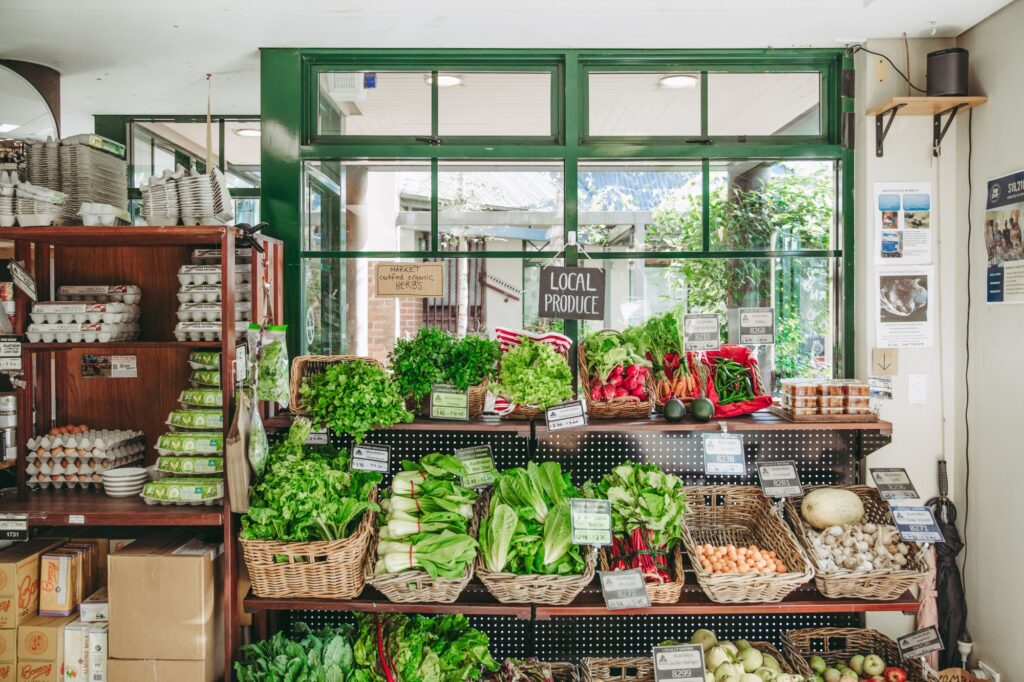
Starting your three-day challenge
List your foods
Make a list of the everyday foods you’ll want to eat during this three-day challenge. This might include milk, bread, fruit, eggs, vegetables, herbs, fish, fruit juice, olive oil – and what about salt and sugar? What about snacks, flour for cakes, or tea and coffee? Write it all down. One of the first things you might notice is that, based on what you know about your local ecosystem, some of your foods come from very far away. Maybe you live in a cold temperate place, but you love coconut sugar and bananas. Or you live a long way from any grass-fed dairy country, but you love lots of butter on everything. These items might need to be set aside for the duration of the challenge. If it ain’t local, it ain’t happening.
Research local suppliers
Now it’s time for some research to determine what local food sources are
available to you. You might consider things such as:
- Do you have farmers’ markets nearby? How about a local greengrocer?
- Ask them where they source from.
- Do you have any farms nearby? Can you buy direct? Call them and ask.
- Is there a local food box scheme you can sign up to?
- If you eat meat, do you have a local butcher shop? Go in and ask them where they get their meat from. It’s more likely to be sourced locally than meat from supermarkets.
- Have a look at the eggs you normally buy. Where are they from?
- Can you swap to local honey instead of sugar during this challenge?
- Do you have a friend with a veggie garden whom you can ask for some
- herbs or salad greens for the sake of this challenge?
- Can you supplement with a few local wild greens?
Get cooking and eating
Once you know where you can source local food, it’s time to make a menu, do a shop, and go for it. Three days of a locally sourced diet: what will you discover? New tastes, new relationships. Probably a fair bit of self-restraint. It may leave you wondering what a functional local foodshed would actually look like in your area.
This challenge is also about being creative. What tasty things can you make from local ingredients to replace the faraway foods? There will probably be a bunch of things that are really difficult to source locally, such as bread, salt and pepper, oil, fruit, or whatever else. That’s okay. You decide how deep you go in this. Maybe you go hardcore and don’t eat any of them for three days, which will be pretty illuminating for you. Or maybe you decide that spices, sugar, coffee and bread are exempt from the challenge. It’s up to you.
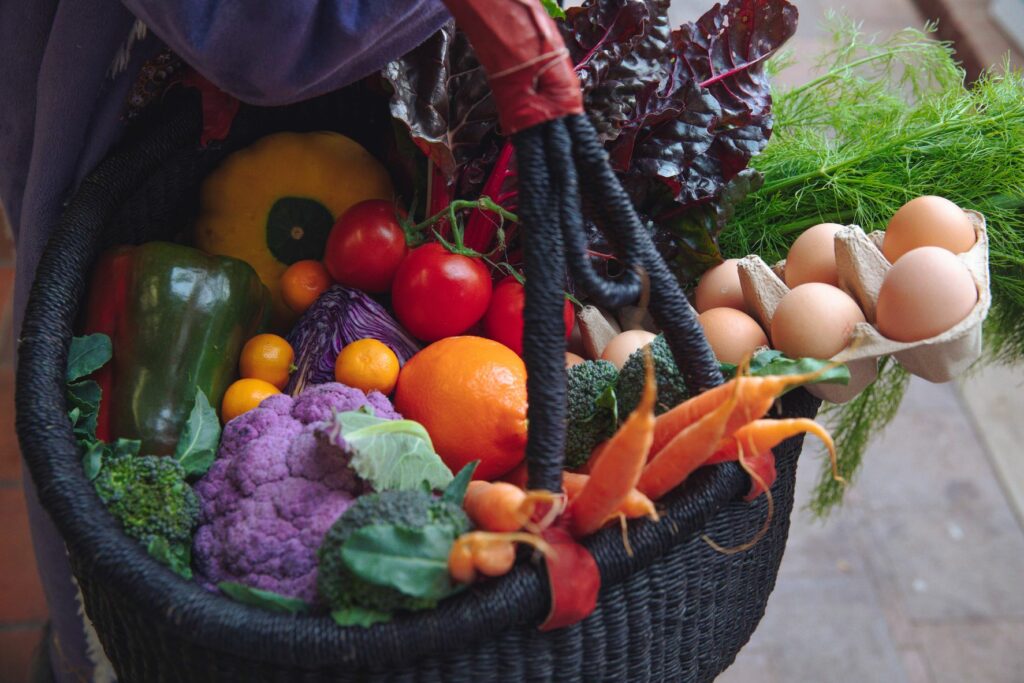
More ideas for eating locally
Once you complete the three-day challenge, you’ll have a heap of new knowledge and skills around how to find local food. Some of this knowledge might be sobering, but we hope some of it is exciting, too! From here, engage with your local food movement any way you can – as an eater, supporter, organiser or whatever. In this way, your weekly groceries become a tool for increasing local resilience on every level possible – and you might save money, too. Your whole community stands to benefit from a local food economy. Here are some ways you can help support yours.
Follow the seasons
Start to understand what foods grow in your area and when things are in season. Those midwinter tomatoes? They’re probably not grown near you. Now you know, you can adjust your eating habits accordingly.
Support local producers
Sourcing food directly from farmers and growers creates an alternative economy outside the mainstream food system. Search your area and you might be able to access veggie boxes, Community Supported Agriculture (CSA) schemes, farmers’ markets or farmgate stall sales. But a lot of farmers don’t sell directly to the public anymore, which leads to our next point …
Join or start a food co-op
Many a food co-operative has begun with a few families getting together to order bulk beans and potatoes, or whatever, from a great-quality source that doesn’t deal with smaller orders. It’s cheaper, you can choose a local producer, and there’s far less packaging and food miles. Maybe there’s already a co-op in your area? Check it out. Or gather a few friends and start your own.
Consider hyper-local (often free) options
By which we mean foraging! Green weeds for your salads, your neighbour’s lemon tree, that rosemary hedge by the school, seaweed down at the beach.
Grow some of your own
Even growing just a few greens or veggies can help reduce your reliance on faraway foods. Remember, you can grow sprouts and microgreens on your kitchen windowsill – no garden required.
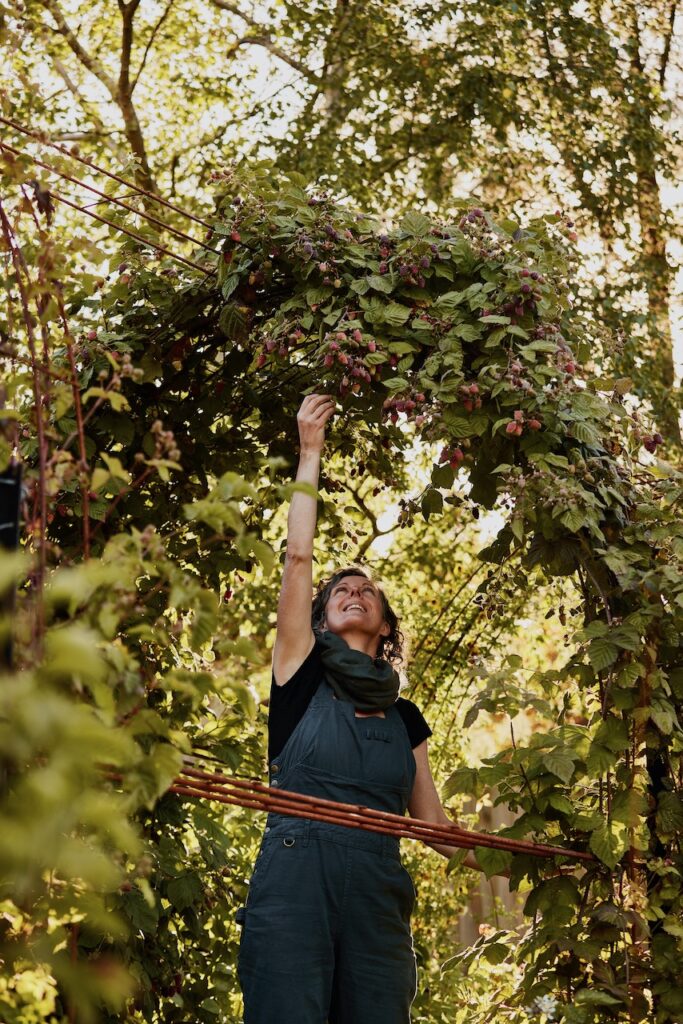
Forage local greens such as dandelion leaves. Local food doesn’t just have to come from the shop or garden.
Three days of a locally sourced diet: what will you discover? New tastes, new relationships.
Join your local food co-op
When we source our food directly from farmers, growers and small distributors, rather than large supermarkets, we participate in an alternative economy that sits outside the mainstream food system. This in turn creates more resilience for everyone in your community. The money you spend benefits local farmers, not giant corporations with questionable ethics, and it stays in the local economy.
Wherever you live, an alternative to buying everything from supermarkets may well already be operating at the margins of your community, in the form of a food co-operative. A food co-op is a group of individuals who get together to buy food from local farmers, as well as ethical or fair-trade suppliers. Co-ops are run democratically and members are usually responsible for volunteering to run the co-op, too.
With this kind of food-access structure, your weekly grocery spend can become a tool for increasing local resilience on every level possible, while supporting farmers who are stewarding our landscapes, watersheds and catchments. As a co-op member, you’ll often save a fair bit of money, too, via the magic of buying in bulk (at the co-op level) and passing those savings on to folks who source their food from there.
And then there’s the awesome community aspect of co-ops: belonging, helping, packing, learning. People swap recipes and spare bags and buckets for beans and noodles and broccoli. Stories get told, kids get to be in the thick of a packaging-free food system full of new shapes and smells and sometimes spare strawberries. Community gets cultivated. It’s the world we all want to live in, really.
The first step is to investigate if a co-op is already up and running in your area. Do they need volunteers? Do they have events you can join? Go down and say ‘hi’. Bring your jars or containers.
Perhaps a co-op doesn’t yet exist in your area, but you’re interested in getting one going? Give it a go! You can start with just one thing, to get a feel for it – and it doesn’t even have to be food. Maybe you could buy toilet paper in bulk with a few folks you know, or buy a huge bucket of laundry powder and split it with a few friends. Once you’re comfortable with the process, you can move on to food staples.
All food co-ops start with people just trying to sort out their everyday needs. And as a bonus, this can be done in a way that benefits everyone involved significantly; from the growers of that food to you and your wider ecosystem, too. All you need is a desire for a better food system, a pot of tea and a few friends who like to eat and save money.
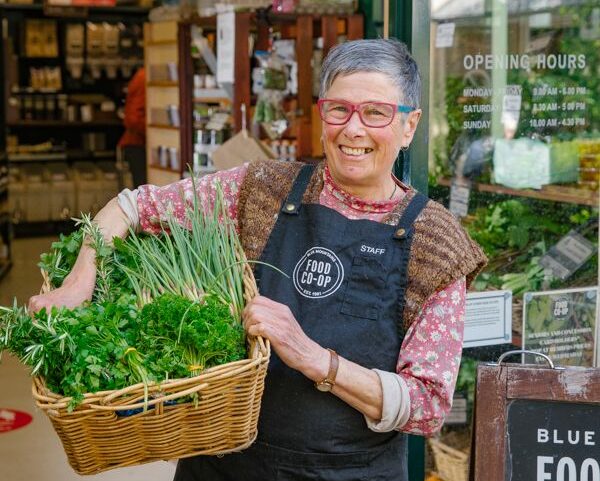
Common types of food co-ops
A co-operative approach to food sourcing can take many forms. Each structure can be tweaked and adapted to suit both the needs of the local community and the availability of produce nearby.
Membership-based
One of the most common co-op structures requires ‘customers’ to also be members. By paying a small membership fee each year, you get access to the co-op shop. Members may be asked to volunteer for a certain number of hours as part of their membership. This leads to remarkably low running costs and overheads so the mark-up on products can be kept to a minimum.
Home-based
Simpler and smaller-scale food share operations can be run from a home garage or front room, and may serve just a few families or a group of friends. Often these kinds of co-ops focus on buying dry goods in bulk – things such as nuts, legumes and grains, noodles, pasta, flour, seaweed, olive oil, apple cider vinegar and potatoes. Volunteers package all this up into smaller volumes, and members come round to collect their share.
Everyone shares in the savings from having bought in bulk, and benefits from less packaging and plastic.
Online ordering
Online co-ops are springing up in communities that have little access to organic, local food. Members order online once a month, within a certain time period. The co-op then purchases bulk foods, before splitting and packing to order. Once ready, members collect their order from a central home or shopfront.
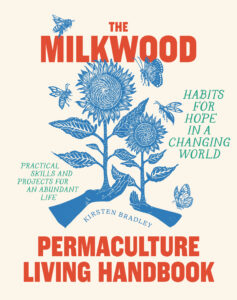
Images and text from The Milkwood Permaculture Living Handbook by Kirsten Bradley, photography by Sam Shelley. Murdoch Books RRP $45.00
SPECIAL OFFER FOR CO-OP MEMBERS FROM THE LITTLE LOST BOOKSHOP
Co-op members can receive a 15% discount on The Milkwood Permaculture Living Handbook by Kirsten Bradley when they purchase in store at The Little Lost Bookshop.


